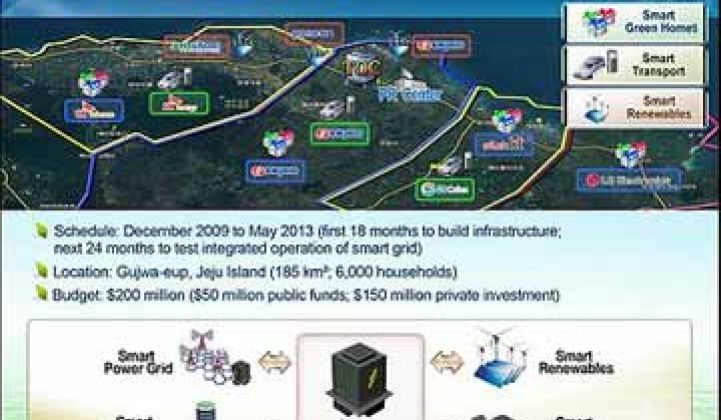When it comes to smart grid -- and just about everything else -- penetrating the Chinese market is a major business strategy for many corporations. IBM is no different. However, instead of seeing surrounding countries and provinces as stepping stones to the big prize, IBM is taking a holistic view of the region and the opportunities it presents.
That approach is possible because of the sheer size of IBM, which has the resources to spread itself far and wide. But it is also strategic. The technology giant opened an Energy & Utilities Solutions Lab in Beijing earlier this year, and has more recently used Shanghai Power for its first pilot of a new solution to reduce outages. But IBM is also actively interested, and involved, in various other countries, from automated nations such as Japan and Korea to emerging nations such as Vietnam.
“You get this kaleidoscope of countries,” Brad Gammons, VP of Sales and Solutions for Energy & Utilities at IBM, said of Asia. “It’s a great place to test solutions across a full spectrum.”
In China, the excitement is testing things on a major scale. The Chinese government has reportedly invested $7.3 billion investment in smart grid and related technologies in 2010 alone. Shanghai Power was the first pilot for IBM’s Integrated Distribution Outage Planner, or IDOP, to automate their business processes to manage maintenance to minimize outages, and the program saved $5.1 million a month.
Many other Asian countries already have highly automated systems and few outages, so instead of improving downtime, the next step in smart grid is integrating renewables, EVs and two-way communications between customers and utilities. At the Jeju Island Smart Grid Demonstration Project in South Korea, IBM is providing the integration technology for the network to move seamlessly between different points in the grid.
The pilot is an ambitious one. “It’s a very well-put-together project,” said Gammons, noting South Korea’s strong national background in technology players that are willing to work to get the project accomplished.
Asia is also a wonderful test bed to see how smaller projects like microgrids can change the way that small communities operate in countries like the Philippines, or how you can build a grid from the ground up in emerging cities, according to Gammons. The larger players in the region are also looking outwards, making it essential to keep your eyes open and ear to the ground when doing business.
“You can draw good ideas from different places and apply them,” he said. “As [China and Japan] develop, they’re looking not just to meeting national objectives, but also to how best to provide technologies to other markets [like Africa].”
Although Asia presents a different smart grid picture than the U.S. or Europe, IBM does have one strategy that is endlessly debated here in the U.S. -- how to keep the customer aware of the benefits. As WenJun Yin, an Analytics and Statistics Manager at IBM Research, discussed the analytics systems used with IDOP, he also spoke of its advantages to customers.
Like the rest of the world, smart grid in China cannot just be a top-down directive; the benefits have to be clear. As companies, and utilities, struggle to make the case to consumers, Gammons argued that there was benefit in all of these projects and it is simply a matter of getting the messages right.
“Consumers are much more aware of where their national dollars are being used to build on infrastructure,” said Gammons. “You need a body of examples [of the benefits.] You have to constantly be reinforcing it. You can’t just have one example.”



